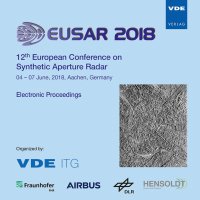Challenges and first results of an airborne passive SAR experiment using a DVB-T transmitter
Conference: EUSAR 2018 - 12th European Conference on Synthetic Aperture Radar
06/04/2018 - 06/07/2018 at Aachen, Germany
Proceedings: EUSAR 2018
Pages: 4Language: englishTyp: PDF
Personal VDE Members are entitled to a 10% discount on this title
Authors:
Walterscheid, Ingo; Wojaczek, Philipp; Cristallini, Diego (Fraunhofer FHR, Germany)
Summers, Ashley (Defence Science and Technology Group, Australia)
Abstract:
This paper evaluates passive synthetic aperture radar (SAR) using a non-cooperative transmitter of opportunity (DVBT) and an airborne receiver. Multiple experiments during a measurement campaign in summer 2017 have been conducted to collect data of different bistatic geometries. It has become evident that airborne DVB-T receivers are more affected by co-channel interference (CCI) generated by transmitters at larger distances in contrast to ground-based systems. This leads to a wideband noise jamming, which makes it difficult to reconstruct accurately the reference signal. Therefore, a suppression of the CCI is essential to significantly improve the resulting image. Beside a description of the experiments and the general processing steps, the impact of a CCI suppression approach on the focused image is shown.


